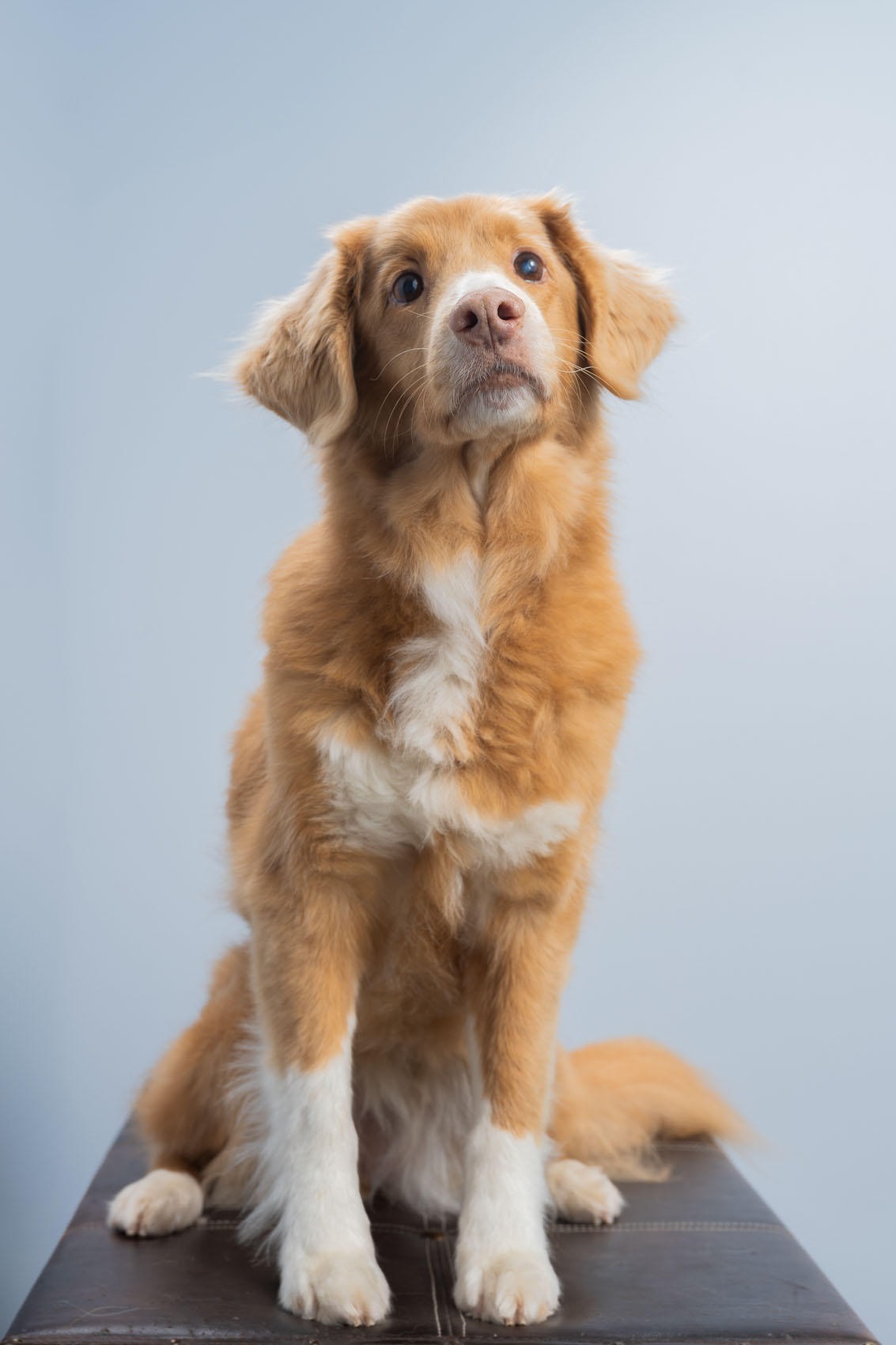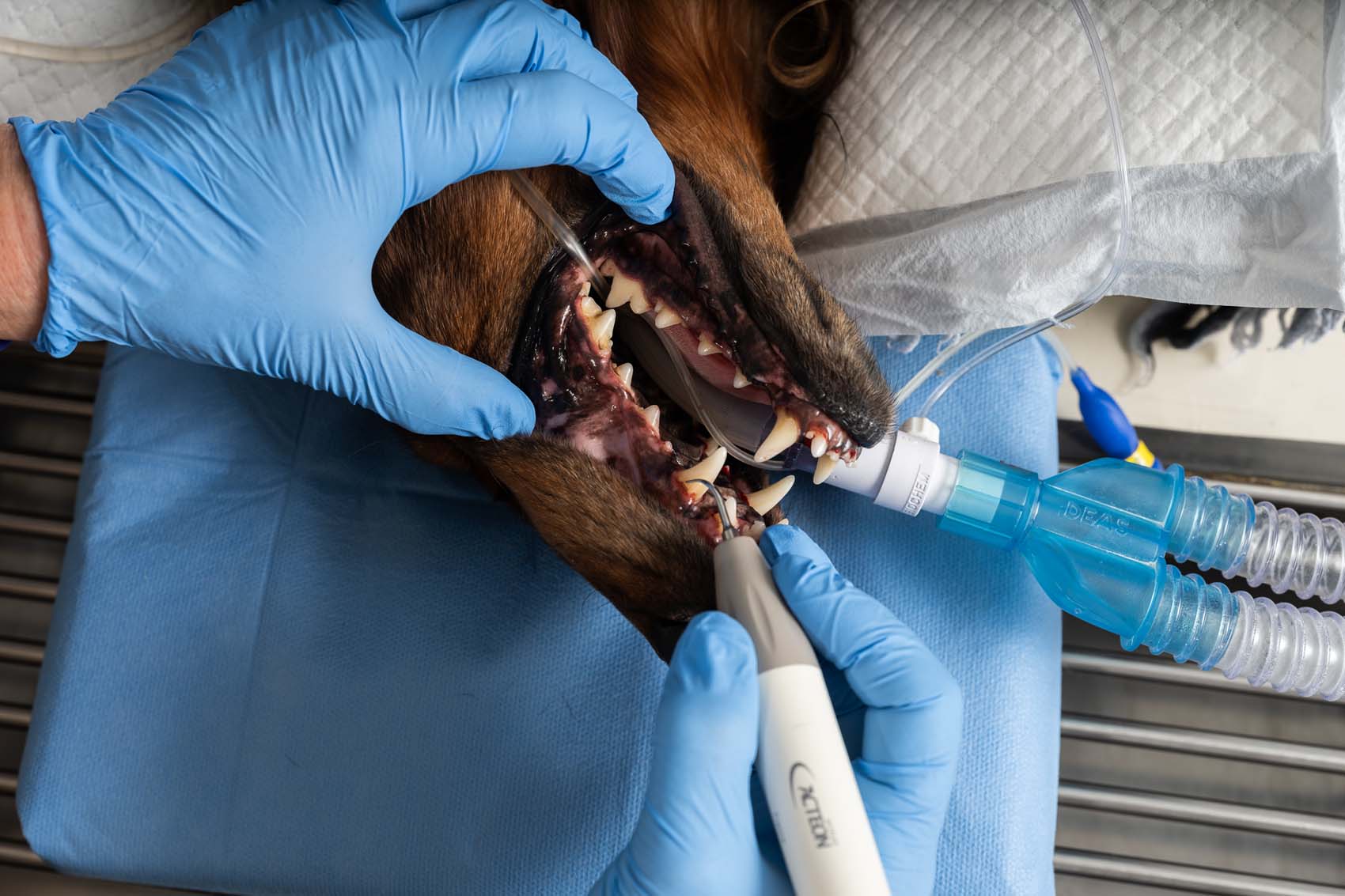Patient instructions
Anident treats a lot of referral patients. If you are booking an appointment for further examinations or treatment of your pet, please make sure that the referring veterinary clinic sends us your pet’s following information:
- patient report
- dental X-rays and photographs
- blood sample results and pathologist’s answers
- possible medications (names and dosages of medications)
This way, our veterinarians can familiarize themselves with your pet’s treatment history before the visit.
We request that the information will be sent by email to anident@anident.fi. In urgent cases, please contact the clinic by phone.
Preparing a patient for dental and maxillofacial surgery

FOOD FASTING
Due to anesthesia, the dog must be completely fasting for 6-8 hours and without drinking for 2 hours. For puppies, the fasting period is shorter depending on the puppy’s age and size. Excessively long fasting before anesthesia in a small patient will unnecessarily lower blood sugar. Make sure to check the puppy’s fasting instructions separately by asking. Please note that blood samples taken during the procedure require a 10-hour fast. Rabbits and rodents do not require before anesthesia and must have their own food.
MEDICATION
If your pet has an underlying condition that requires medication (e.g. diabetes, liver, kidney, heart disease, Cushing’s) or is on antibiotics or anti-inflammatory medication, please enquire about the medication instructions separately. This will ensure the safety of your pet during anesthesia.
OUTDOOR EXCITEMENT
The dog should be used to its needs before anesthesia, but strenuous exercise on the morning of anesthesia should be avoided.

ANAESTHESIA SAFETY
When possible, dental patients are invited for a pre-examination, where the veterinarian performs a general examination of the patient, takes the necessary blood and urine samples, and goes through the treatment plan together with the owner and provides a written price estimate. Anesthesia and pain relief are planned individually by taking into account, for example, the pet’s underlying diseases. We take blood samples from pets over 7 years of age before procedures requiring anesthesia. Heart patients must undergo an ultrasound of the heart before anesthesia. If your pet develops new symptoms or has changes in condition, please contact our office. This way, we can assess whether they will affect the timing of the procedure or, for example, medications.
PREPARATION FOR THE PROCEDURE
A pet coming for surgery is first sedated with an intramuscular injection. We strive to make the treatment visit as stress-free as possible for the patient, and the owner should be prepared to be present during the patient’s pre-sedation.
The effect of the premedication begins within about 10-15 minutes, after which the pet moves on to preparation. The clinic veterinarian inserts an intravenous cannula into the pet, through which medications are administered. The animal breathes supplemental oxygen through an oxygen mask throughout the preparation.
INHALATION ANESTHESIA
Inhalation anesthesia is used in dental treatment and surgery. The patient breathes oxygen and anesthetic gas, the amount of which is used to regulate the depth of sleep. The ventilator breathes on behalf of the patient if necessary.
In anesthesia and pain relief, a so-called multimodal method is used, i.e. several different combinations of substances and methods to maintain anesthesia and prevent pain. The patient is administered dilute intravenous anesthetic-analgesic solutions, local anesthetics, and drugs that block pain with different mechanisms.
Throughout the anesthesia, the patient has their own nurse who monitors the anesthesia. The patient’s heart rate, oxygen saturation, electrocardiogram, body temperature, carbon dioxide concentration in exhaled air, and blood pressure are measured. In addition to the values of the monitoring monitor, the nurse listens to the pet’s lungs and heart with a stethoscope, monitors the color of the mucous membranes and capillary refill time, feels the pulse, and observes the eyelid reflex. The body temperature is maintained at a constant level, and heating pads, blankets and heating fans are used to help.
All patients have an anesthesia monitoring form completed for them, in which measurement results and medications are recorded accurately throughout the visit.

Dental treatment is performed under general anesthesia: the patient is “on a drip”, intubated and wrapped warmly, and carefully monitored.
WAKING UP
The patient’s awakening is monitored at the clinic until it is safe to be discharged. Dogs go home on their own, but it should be noted that walking while drowsy is unsteady and requires support. Cats go home in their own transport boxes after waking up. It is a good idea for the patient to bring a warm blanket for the trip home. It is a good idea for puppies, small or thin-haired pets to bring a coat. The client will receive the most common medications, supplies and recovery food that will be taken home with them during the visit. The emergency telephone number of the treating is also provided for the night following the procedure, which is usable when the clinic is closed.
AT HOME
It is best not to leave your pet alone at home on the day of the procedure, if possible. The tired patient should be allowed to rest peacefully in a low, warm and safe place and separated from other family pets.
Your pet may be confused or drowsy due to the medications, grooved and easily tripped. It is important to ensure that the patient does not injure himself. Restlessness and whining are most often caused by sedatives and painkillers. Some pets are very restless for the next day.
The client receives the most common home medications, supplies and recovery food with the visit, as well as the emergency telephone number of the attending veterinarian for use during the following night.


